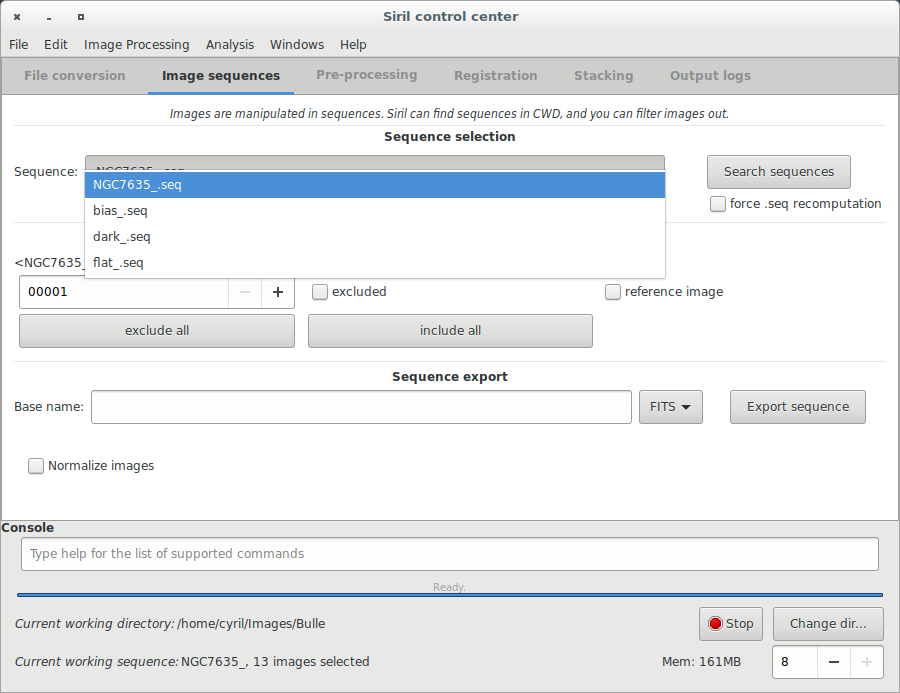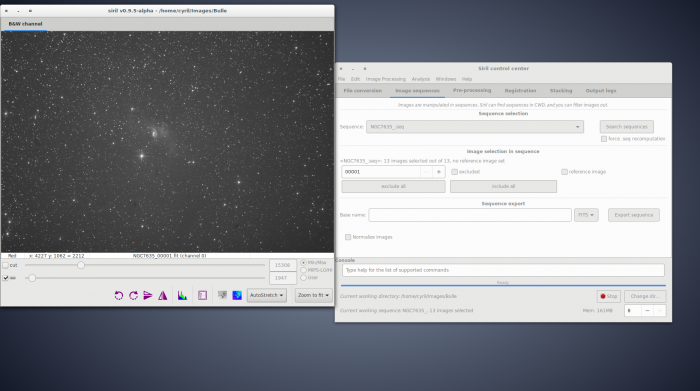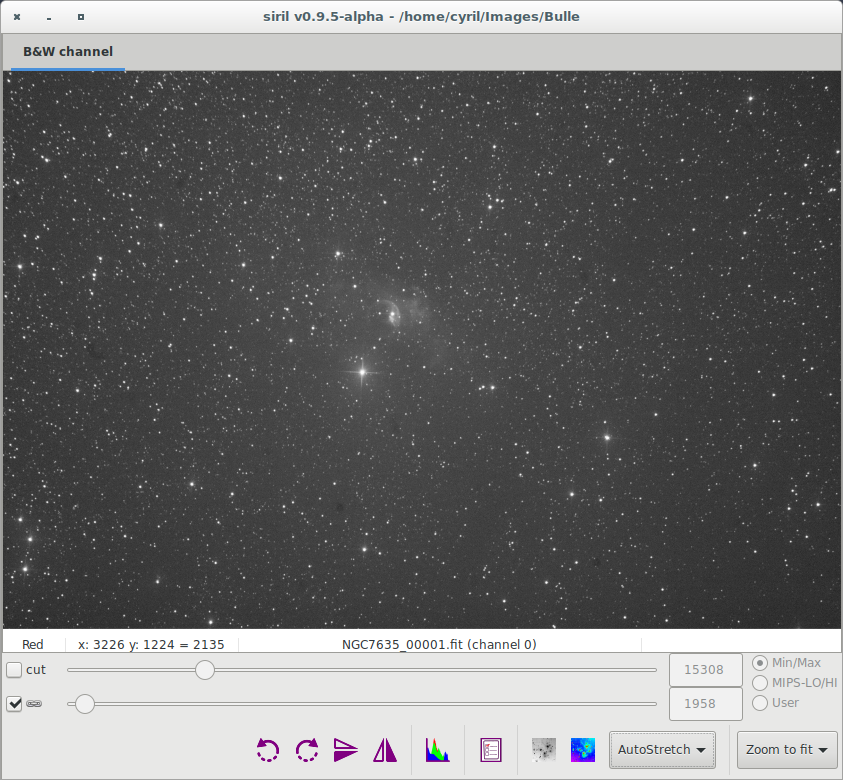No edit summary |
m saving the page |
||
| Line 14: | Line 14: | ||
<!--T:4--> | <!--T:4--> | ||
Once you have your Siril's format .fit files, you can switch to the ''sequence'' tab seen below. Sequences are what Siril uses to | Once you have your Siril's format .fit files, you can switch to the ''sequence'' tab seen below. Sequences are what Siril uses to represent the manipulated files. | ||
<!--T:5--> | <!--T:5--> | ||
Revision as of 22:14, 15 April 2015
Siril processing tutorial
- Convert your images in the FITS format Siril uses (image import)
- → Work on a sequence of converted images
- Pre-processing images
- Registration (PSF image alignment)
- Stacking
Work on a sequence of converted images
Once you have your Siril's format .fit files, you can switch to the sequence tab seen below. Sequences are what Siril uses to represent the manipulated files.
Click on the "search sequences" button. If you only have one .fit files sequence in the working directory, it is automatically selected. Else, the list will pop-up and you'll be able to select the sequence you want to use. When the sequence is loaded, two windows are opened: the grey frame control window, on the left of the image below, and the RGB composition rendering window, behind the main window on the image below. In the case of CFA files, no RGB windows will be open as the image is monochrome.
The grey window is used to display colour components for the image, control their composition in the colour image, and give information about the displayed frame, like the layer's name (for now it can be only Red Green or Blue, but it will be settable to narrow bands some day), pixel value when moving the mouse on a pixel, file name and layer number, zoom value, FWHM value of the selection, and some display tools.
The cursors at the bottom control thresholds for black and white on the grey image, allowing to play with contrast and lightness of each channel separately or together (disabled when Histogram mode is on), depending if the chain button is checked or not. Moreover a Display Mode viewer is used to improve the visibility of an image, but without altering its pixel data in any way. Click here for more details.
Next item of the tutorial: Pre-processing images.


